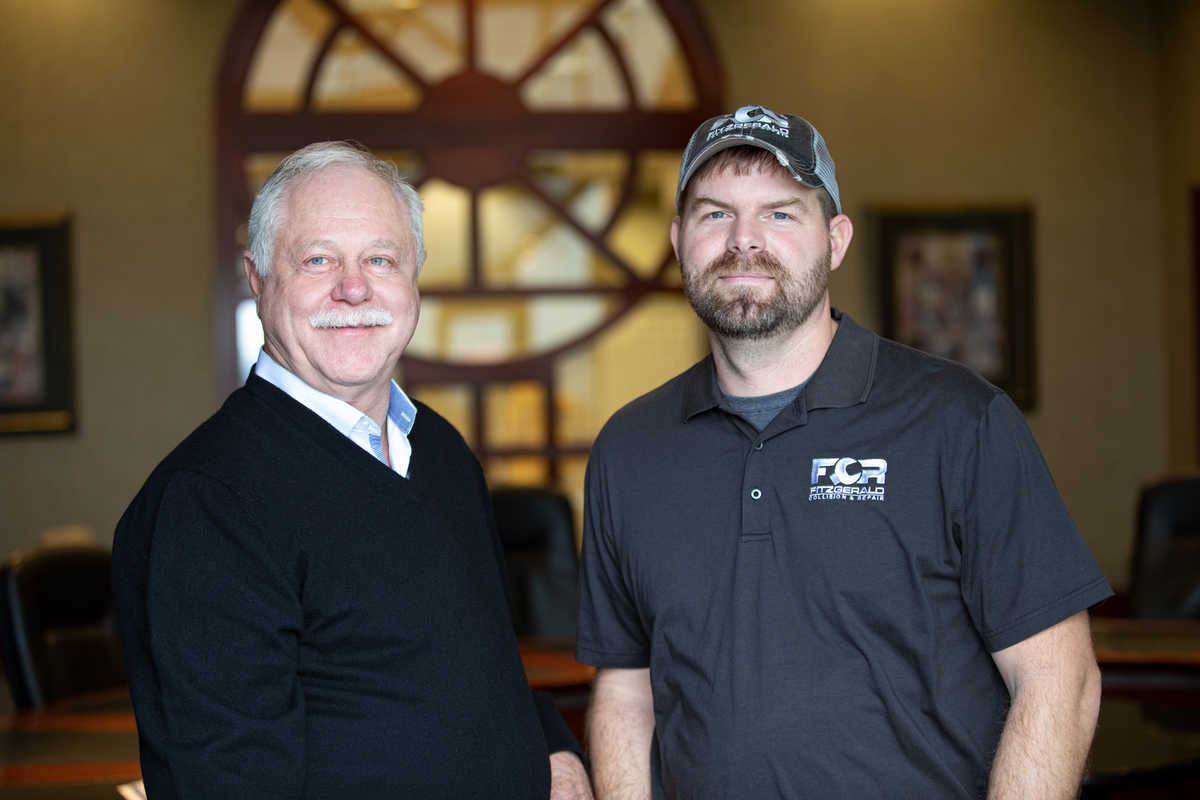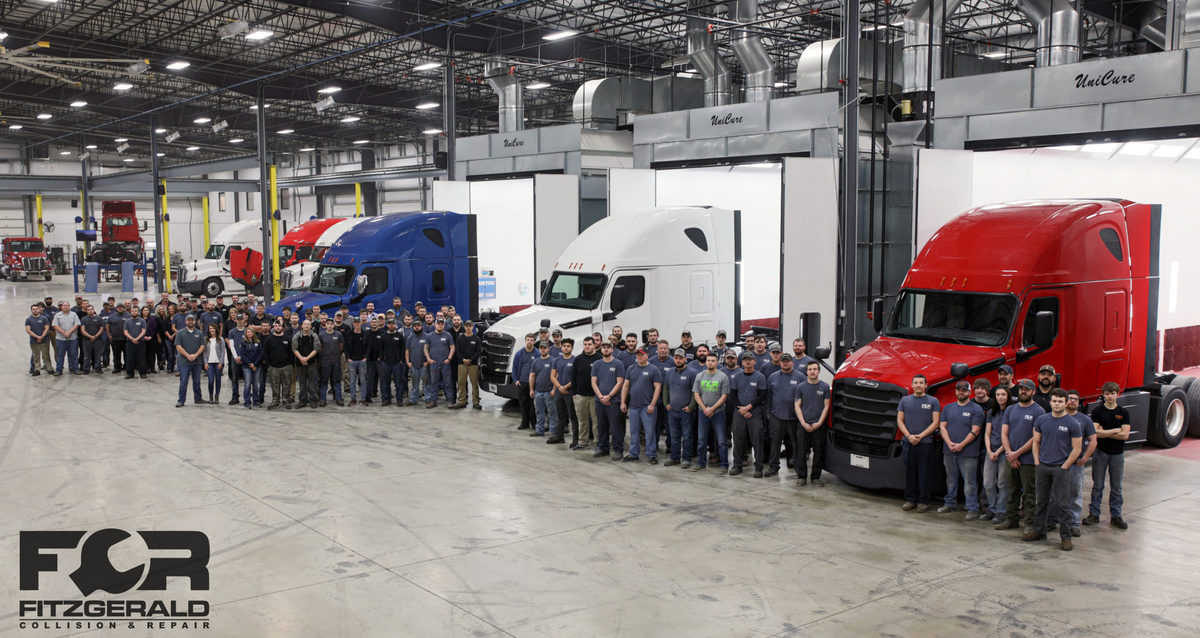
Trucks will inevitably wreck from time to time, and when they do, fleet managers and owner-operators typically have them towed to the nearest body shop, where they sit in repair for anywhere from four to seven weeks. This protracted turnaround time cuts into the bottom line and could potentially push drivers out of the industry. When many owner-operators live paycheck to paycheck, and an average truck brings in as much as $750 of revenue a day, 50 days is way too long.
The SONAR chart below shows a truck’s net revenue per week. While daily revenue fluctuates, a truck that generates $750 per day and $3,750 in a week, as seen in June 2019, has a lot to lose if it sits for weeks or even months at the body shop.
“In my own company, the body shops would stack trucks up because we couldn’t get to them fast enough,” said Max Fuller, co-founder of U.S. Xpress. “My average days down for a truck going into the body shop was 38 days. For the Freightliner, 38 days sounded bad.”
When wrecked trucks are towed to most dealerships, they must compete for service with trucks in need of standard warranty service. However, those two jobs are not necessarily treated equally, as warranty service typically pays over $125 an hour in comparison to the $85 an hour that shops earn on collision repair. The dealership doesn’t favor collision work because it’s less lucrative, more unpredictable, and, a wrecked truck that is dismantled may extend across two or three bays. Service repairs require less space so naturally collision work can be seen as cutting into the shop’s productivity and bottom line.
For a large fleet, 60-75 trucks could be in shops across the country at any given time for collision repairs that take 30-50 days on average to complete. Factors such as parts acquisition, estimates for insurance, and proper training play a big part in the delays. This also means the fleet manager can have as many as 60 vendor relationships to manage, payments to make, and separate updates for each additional vendor — a logistical challenge that adds pain to the loss of revenue.
The SONAR chart below reveals how many accidents U.S. Xpress reported to the Department of Transportation (DOT) per month over a 21-month period. In July 2019, for instance, there were five wrecks per thousand trucks.
Fortunately, in 2013, Fuller stumbled upon the skills and entrepreneurial mind of Robert Fitzgerald, who at the time helped run the family business, Fitzgerald Glider Kits in Byrdstown, Tennessee. Fuller had asked to tour FGK, as he was interested in the dual fuel glider technology at the time.
What Fuller didn’t anticipate was how fast the team built 55 trucks every week. Because he understood the bottom-line threat of collision repair, his wheels started turning, and he challenged Robert Fitzgerald to build a collision center that focused on truck repairs. If the Fitzgerald team could repair trucks as quickly as it could build them, every major fleet in the country would flock to it.
A year later, Robert sold his shares of Fitzgerald Glider Kits and found a shop to purchase down the road in Livingston, Tennessee. On a handshake deal, the two came to an agreement. If Fitzgerald’s newly minted business would cut the standard turnaround time in half, Fuller agreed to be Fitzgerald Collision & Repair’s first customer.
“The first two years, he was my only customer,” Fitzgerald said. “In that time, we were able to take him from 38 days to, at one point, four days.”

Fitzgerald took Fuller’s idea and totally reimagined the traditional body shop model. Using the latest equipment and a skilled team, he approached collision repair with an assembly line mentality.
“You can’t think of this as a body shop,” Fuller said. “Yes, they do repair wrecks. But when you think of a body shop, it’s two or three guys in the back side of the shop that are tearing wrecks apart and putting them back together. [Fitzgerald Collision & Repair] is almost like a production shop. They time every step and know how long it takes to do things.”
FCR’s secret lies in its choice to centralize and specialize. Currently, they only repair Freightliner Cascadia and International trucks. Through a partnership with Premier Truck Group and now Landmark International, they keep over $2 million in OEM parts stocked at all times. This gives them a competitive edge when compared to traditional shops because they rarely have to delay a repair due to a part being out of stock.
When a driver or a fleet manager calls FCR about a wreck, it deploys one of its six wreckers, which tows wrecked trucks from all over the country to their facility in Tennessee. To increase productivity, the FCR team has been broken into specialists. Try to imagine one person doing the same job day in and day out. Eventually that trained specialist can not only do the job faster but also do it with precision and higher quality than someone less familiar. No different than a well-rehearsed Nascar pit crew. Now imagine a shop of 130 employees and each person being a specialist in their own respective field, and you will start to get a picture of what FCR is all about. Whether it’s to repair interiors, replace panels, straighten frames, chase electrical issues, or rebuild hoods and fenders, every team has its specialty.
Today, FCR repairs the trucks of many other major fleets like Swift, Covenant and Marten. For the large fleets, they offer volume discounts and competitive price matching. For owner-operators, FCR offers a generous payment of $150 per day if they don’t repair their truck within 10 days. This is seen as an additional insurance for owner-operators and small fleets that are so dependent on their trucks for income.

“Robert has turned the trucks faster than any other solution I’ve found,” Fuller said. “The body shops have been a big bottleneck, but no dealer has really thought through how to run them efficiently because they don’t have enough value.”
Asked about the cost of repairs at FCR, Fuller says it’s about the same as an average body shop when you consider how cheaper labor in Tennessee balances out the cost of the wrecker bill. Where he sees the most difference is the increase in uptime.
“I think his concept is going to grow,” Fuller said. “I keep trying to convince him to build other locations around the country so I can actually get trucks even faster. Since we’re a national carrier, we’ve got trucks everywhere. So, the closer he is to where we do have accidents, the faster I probably turn the truck.”

The collision and repair model Fitzgerald built is gaining traction: A second facility is preparing to open later this year in Davis, Oklahoma.







